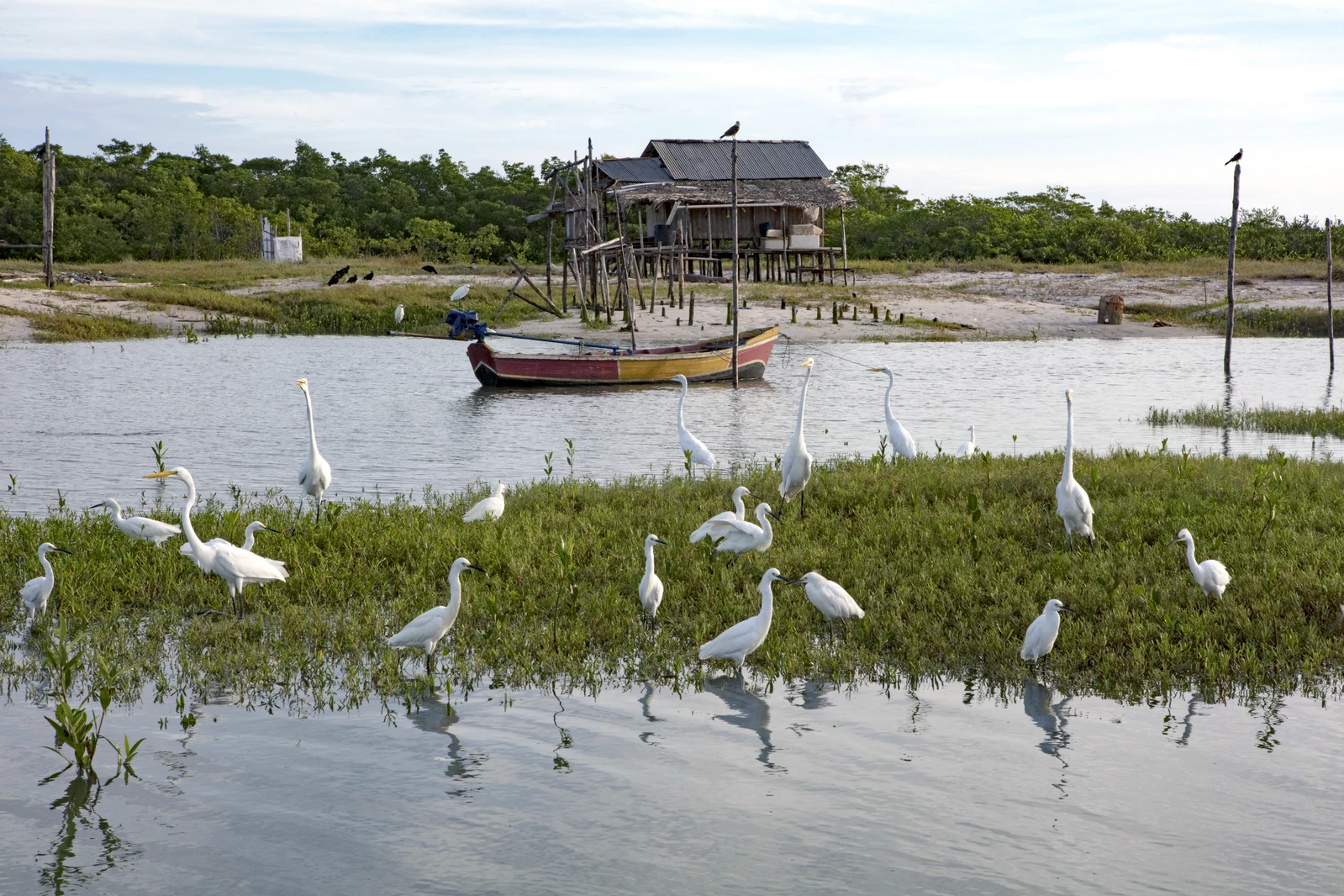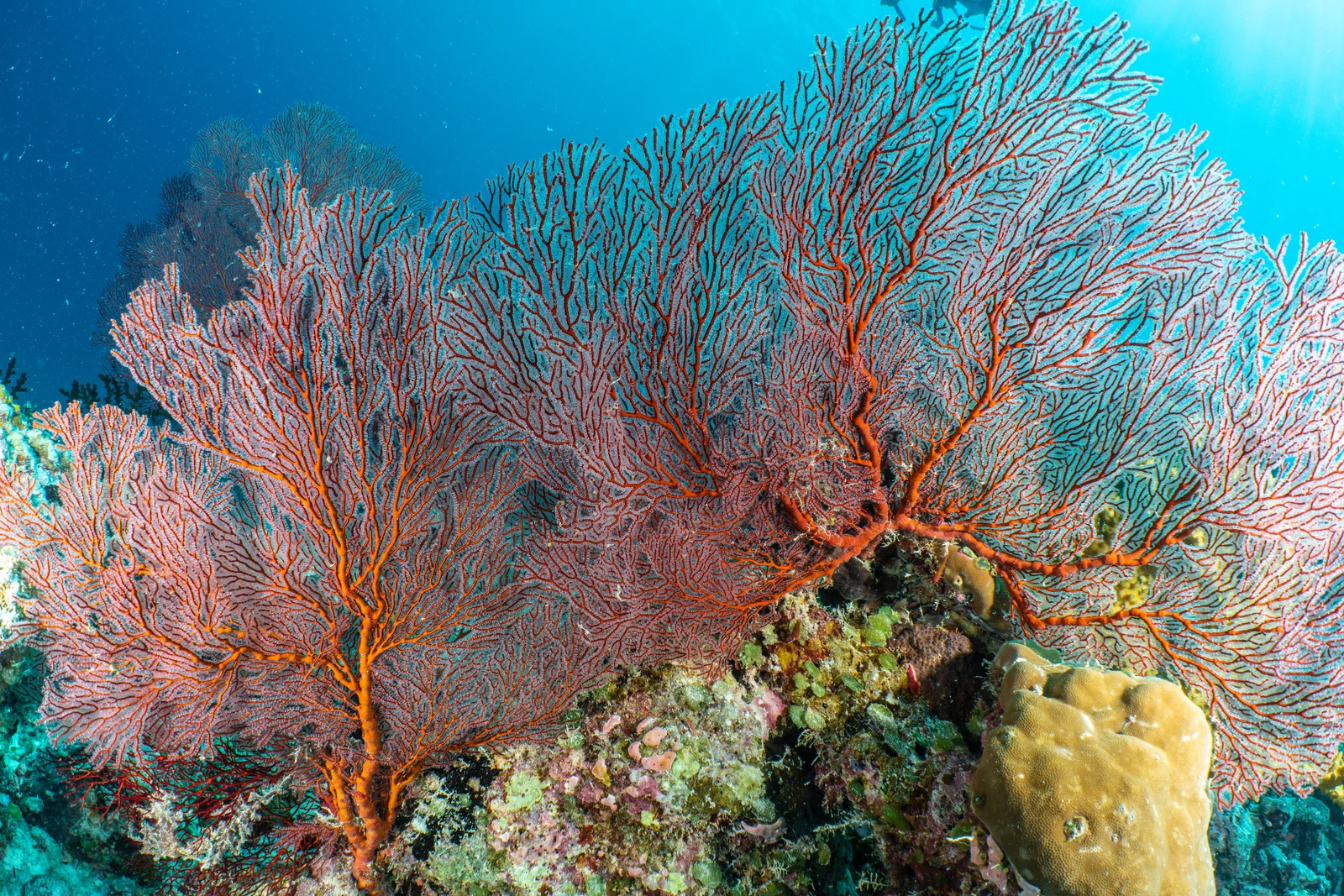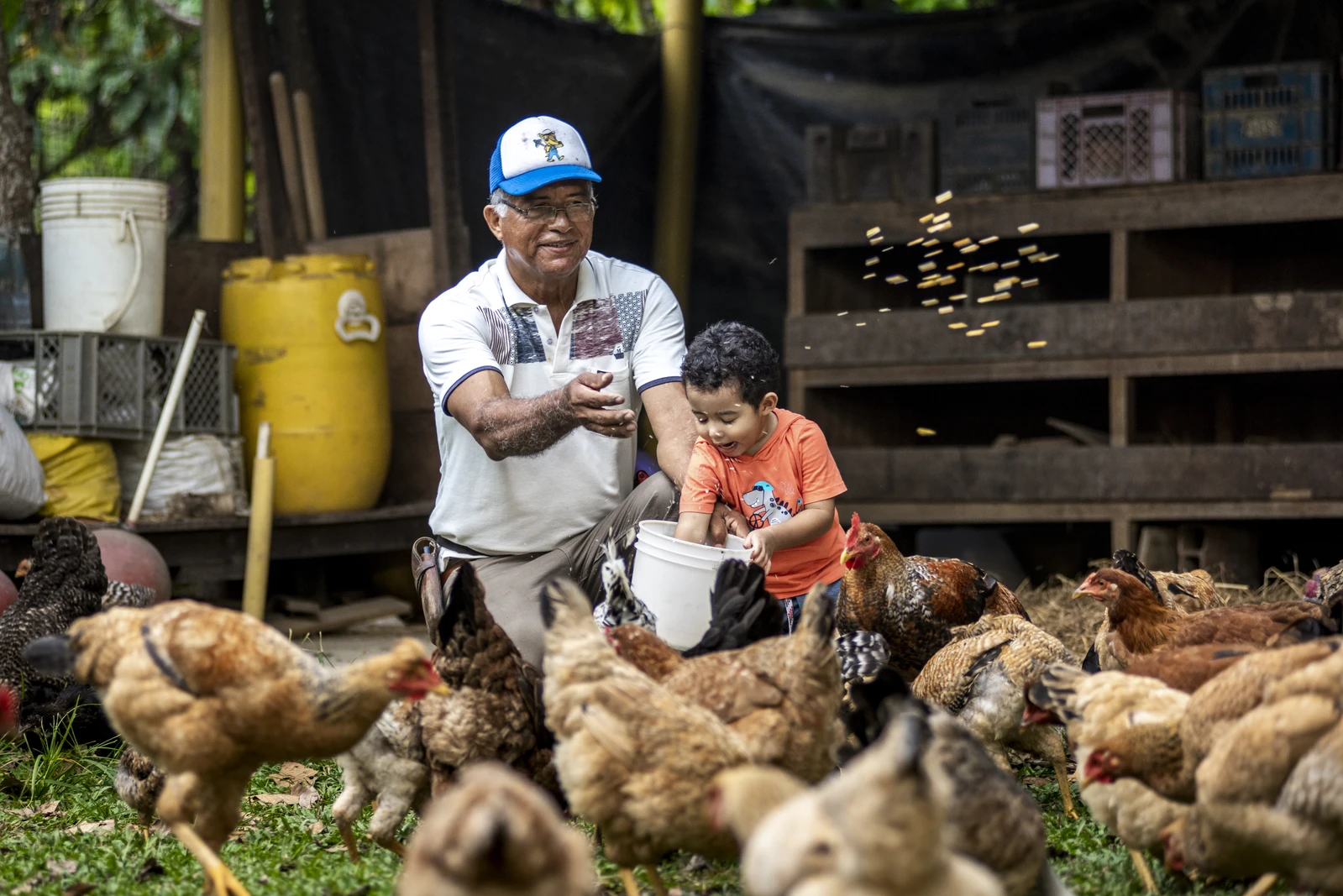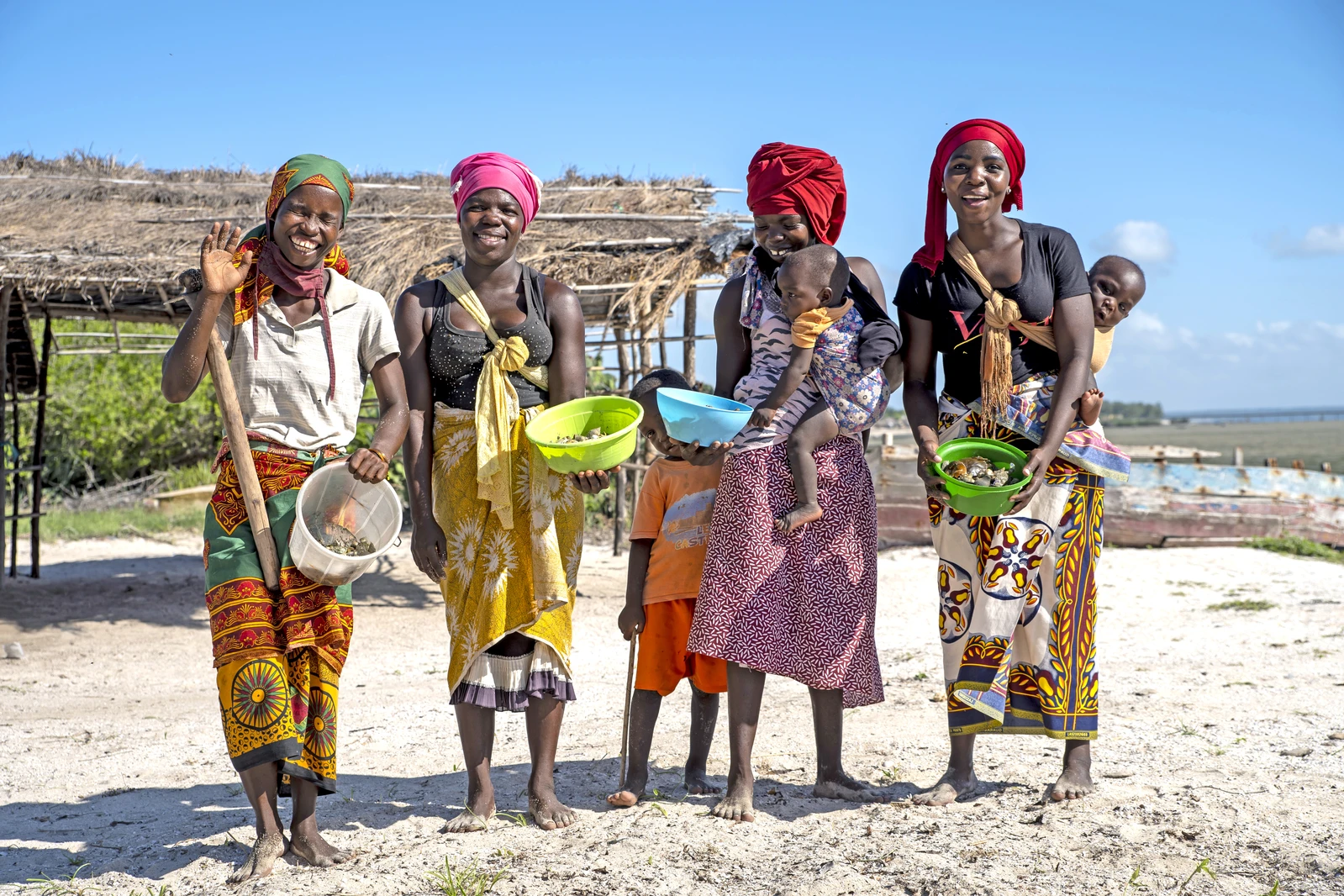Building climate-resilient communities
As climate change wreaks havoc on natural ecosystems, marginalized, small-scale fishing communities and agriculture-dependent economies bear the brunt of climate change impacts.
Investing in the world’s most vulnerable communities will help ease the great climate migration and support community resilience for decades. Through Rare’s people-centered approach and design thinking, we facilitate solutions that help individuals and their communities face the challenges on their doorsteps.
» Learn more below about climate change and climate resilience.
» Learn more about Rare’s work and approach to building climate resilience through the global 30×30 campaign, sustainable fisheries management, regenerative farming, and the Center for Behavior & the Environment.
What is climate change?
Are climate change and global warming the same?
How does climate change affect coral reefs?
How does climate change affect the Amazon Rainforest?
How does overfishing affect climate change?
How is agriculture affecting climate change?
How does climate change affect biodiversity?
How does climate change threaten biodiversity in the ocean?
How does climate change affect small-scale fisheries?
How do Indigenous Peoples and Local Communities help fight climate change?
What can the average person do to mitigate climate change?
What is 30×30 and how does climate change play a role?
What is climate change?
Climate change refers to long-term alterations in temperature, precipitation patterns, wind, and other elements of the Earth’s climate system. While natural processes can cause climate variations over centuries or millennia, modern climate change primarily results from human activities, particularly the emission of greenhouse gases.
Learn more about how Rare accelerates people-centered climate solutions.

Are climate change and global warming the same?
Climate change and global warming are related concepts, but they are not exactly the same. Think of global warming as one piece of a much larger puzzle called climate change. Global warming refers specifically to the long-term increase in Earth’s average surface temperature, primarily due to the buildup of greenhouse gases like carbon dioxide (CO₂) in the atmosphere. Climate change includes global warming and all the associated changes in weather patterns and climate systems over time. So, while global warming is a cause, climate change is the result.
How does climate change affect coral reefs?
Coral reefs support 25% of all marine life despite covering less than 1% of the ocean floor. They provide food, storm protection, and income for hundreds of millions of people.
Climate change is one of the most serious threats to coral reefs, which are among the Earth’s most biodiverse and valuable ecosystems. These delicate marine structures are highly sensitive to changes in temperature, chemistry, and ocean dynamics — all of which are influenced by climate change. When water temperatures rise, corals expel the symbiotic algae (called zooxanthellae) that live in their tissues and provide most of their color and energy. This leads to coral bleaching, where corals turn white and become energy deprived. If prolonged, bleaching can cause widespread coral death. Other threats to coral reefs include damage from intense storms, reduced light penetration from sea-level rise, and stunted growth from increased water acidification.
READ MORE: How can we finance solutions for coral reef restoration?

How does climate change affect the Amazon Rainforest?
Climate change is having profound and multifaceted effects on the Amazon Rainforest, which is one of the largest and most biodiverse ecosystems on Earth. Often called the “lungs of the planet,” the Amazon plays a crucial role in regulating the global climate, storing massive amounts of carbon, and supporting Indigenous and local communities. As climate change intensifies, so do the threats to its health and stability.
Nestled within the Amazonian biome is the world’s second-largest mangrove forest, stretching 13,989 square kilometers across Brazil’s Amapá, Pará, and Maranhão states. Pará state’s biologically diverse coastal zone provides food security and financial livelihood to 80,000+ people across 500+ communities. The region also holds profound cultural importance for Indigenous Peoples and traditional groups who retain cultural practices, values, and ecological knowledge intrinsically connected to the mangroves. Protecting and investing in this region of the Amazon presents a unique opportunity to support biodiversity conservation, food security, and climate change mitigation.
READ MORE: The Amazon’s natural wonder you maybe haven’t thought about.
How does overfishing affect climate change?
Overfishing and climate change are often seen as separate environmental issues, but they are deeply interconnected. Overfishing undermines the ocean’s ability to store carbon, regulate climate, and maintain ecological resilience, thus indirectly contributing to the worsening of climate change.
How is agriculture affecting climate change?
Agriculture plays a dual role in the climate crisis: it is both a major contributor to greenhouse gas (GHG) emissions and a potential solution through sustainable land management and carbon sequestration.
More than 75% of global food crops rely on animal pollination, which means smallholder farmers must prioritize practices that promote local biodiversity conservation. Rare uses a behavioral science approach to help small-scale farmers in Colombia adopt agroecological practices that benefit soil health, wildlife, ecological services, and thriving food systems.
Rare helps farmers adopt behavioral solutions and sustainable practices that balance food security with long-term environmental sustainability. Our goal is to transform food systems to promote reliable food sources, safeguard economic livelihoods, protect biodiversity, and provide an essential buffer against climate change.

How does climate change affect biodiversity?
The effects of climate change are shifting global landscapes and making ecosystems less viable for the earth’s biodiversity. For example, in the Arctic, warming temperatures are melting ice caps, decreasing permafrost coverage, turning precipitation into rain, and rising sea levels. The world’s forest and desert landscapes are suffering from severe droughts, increased temperatures, and unprecedented wildfires like the 2020 bushfires in Australia.
Cold-blooded animals like birds, amphibians, and reptiles are especially threatened by climate change due to reproduction and migration patterns linked to environmental temperatures. The National Audubon Society found that two-thirds of North American birds are at an increased risk of extinction due to rising global temperatures. Increasing temperatures are also causing a widespread phenomenon of female turtle hatchlings since temperature determines the sex of egg embryos.
How does climate change threaten biodiversity in the ocean?
The effects of climate change, like rising sea levels and increasing temperatures, are driving biodiversity loss in the ocean. Marine heatwaves amplify ocean acidification and threaten the survival of shelled organisms, fish larvae, and coral reefs. Severe weather events and warming waters can wipe out local fish stocks, leading people to lose their livelihoods. According to recent United Nations findings, more than one-third of all shark species, coral reefs, and marine mammals are threatened with extinction.
How does climate change affect small-scale fisheries?
Climate change significantly affects small-scale fisheries (SSF), which are vital to the livelihoods, food security, and cultures of millions around the world — especially in coastal, developing, and indigenous communities. These fisheries are highly sensitive to environmental changes and often have limited resources to adapt
Climate change poses serious threats to small-scale fisheries through ecological shifts, economic vulnerability, and social inequality. However, with targeted adaptation strategies, inclusive governance, and community empowerment, SSF can build resilience and continue to provide critical support to millions globally.
Learn more about our work with small-scale fishing communities.

How do Indigenous Peoples and Local Communities help fight climate change?
Indigenous Peoples and Local Communities (IPLCs) are critical in the fight against climate change, not only because they are among the most affected, but also because they are stewards of some of the world’s most vital ecosystems. Their traditional knowledge, cultural practices, and territorial management play a key role in climate mitigation and adaptation efforts.
Indigenous Peoples and Local Communities are not just vulnerable populations—they are leaders, protectors, and innovators in the climate space. Supporting them with legal rights, financial resources, and decision-making power is essential for building a just and effective climate response.
What can the average person do to mitigate climate change?
An average person can play a significant role in mitigating climate change by making conscious lifestyle choices and advocating for systemic change. While individual actions alone won’t solve the crisis, they are essential building blocks of collective impact and societal momentum.
Individual action is powerful when it’s consistent, community-driven, and paired with advocacy. The climate crisis demands systemic solutions—but those systems are shaped and driven by people. Your choices, voice, and values matter.
What is 30×30 and how does climate change play a role?
Climate change is deeply interconnected with the Global 30×30 goals, which aim to protect 30% of the world’s land and ocean areas by 2030. These goals are a centerpiece of the Kunming-Montreal Global Biodiversity Framework adopted at the UN Biodiversity Conference (COP15) in December 2022.
The Global 30×30 goals are not just about conservation—they are also climate action. By protecting critical ecosystems, we can absorb more carbon, build resilience to climate impacts, and sustain the biodiversity that underpins healthy, functioning planet-wide systems. Success will require coordinated policies, inclusive governance, and a commitment to nature-based solutions that tackle both the climate and biodiversity crises together.